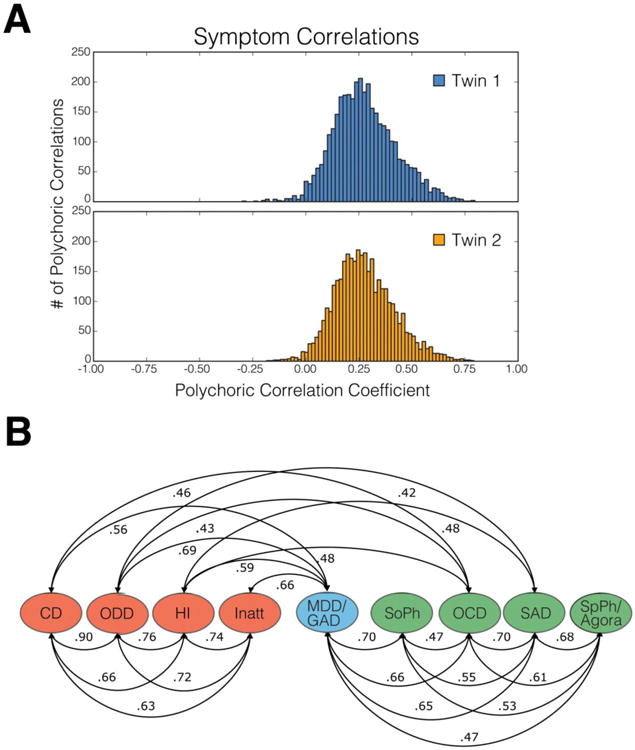Fig 1.

A) Histograms of polychoric correlations among psychopathology symptoms based on caretaker interview with the Child and Adolescent Psychopathology Scale (74) for adolescents in Wave 1 of the Tennessee Twin Study (TTS) (16). Although there is variability in the magnitudes of correlations, most symptoms show at least modest positive correlations with a broad array of other symptoms. Note: a small number of items with correlations +/- than 4 s.d. below the mean were excluded. In each case these involved items with extremely low endorsement rates. B) Correlations among first-order latent dimensions of psychopathology in wave 1 of the TTS based on the same symptoms. The figure is redrawn from Figure 5 page 196 (16). Note: only correlations greater than r = .40 are shown, but all additional correlations are statistically significant. Abbreviations: ODD = oppositional defiant disorder; CD = conduct disorder; HI = hyperactivity-impulsivity; INATT = inattention; MDD = major depressive disorder; GAD = generalized anxiety disorder; social = social phobia; SAD = separation anxiety disorder; spec = specific phobia; agora = agoraphobia.
